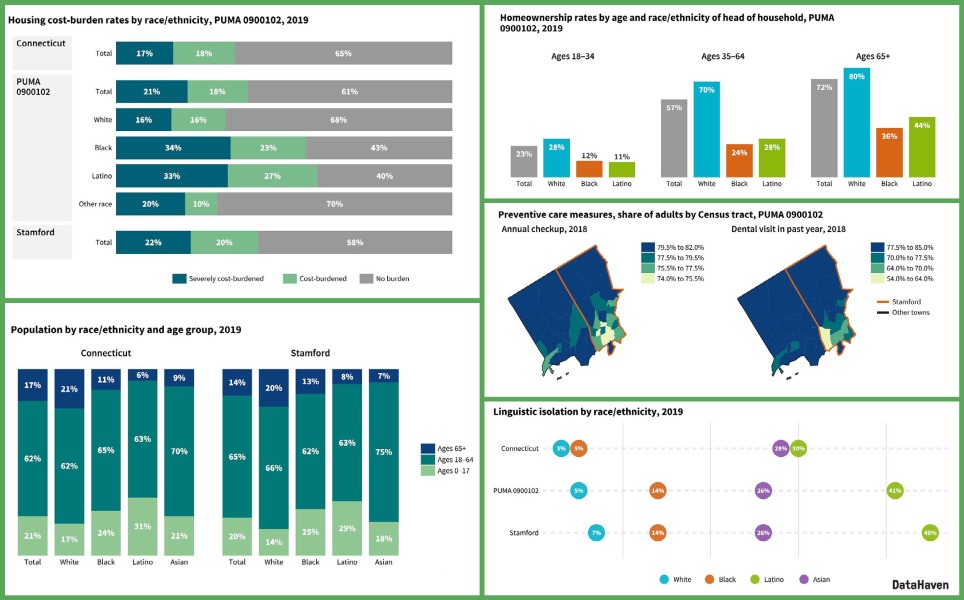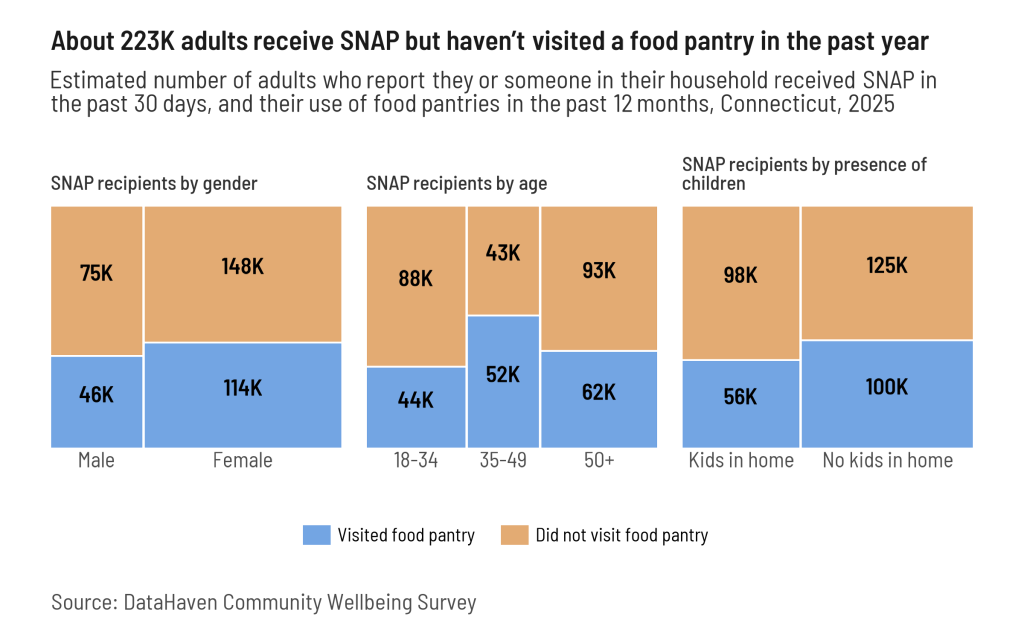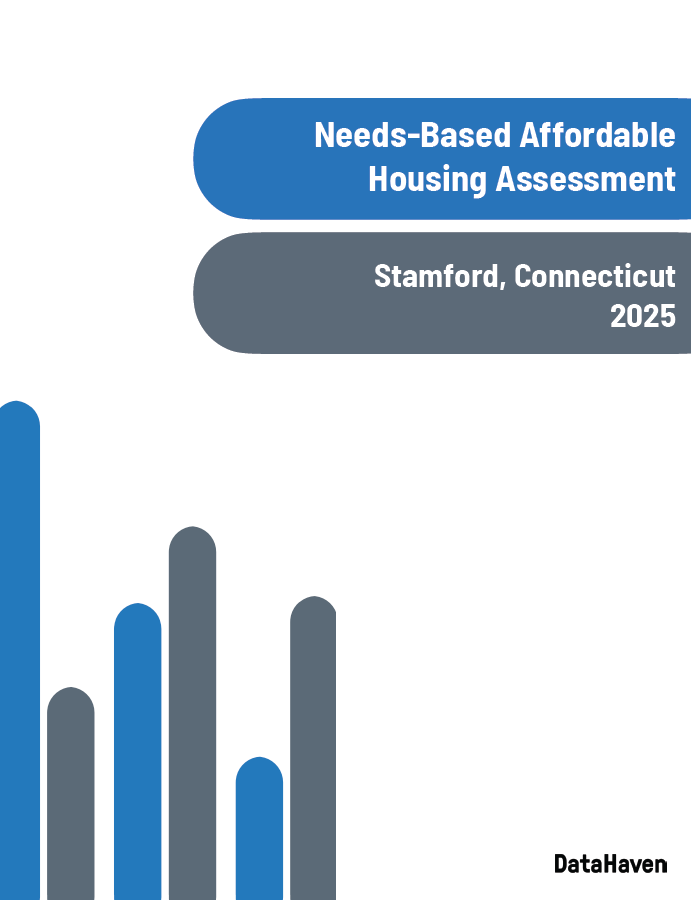Overdose Data to Action: 2023 Update
An update to OD2A Trends in Substance Use, Overdose, and Treatment in the Quinnipiack Valley and New Haven

This 66-page report, which includes many data graphics and maps, is an update to Overdose Data To Action: Trends in Substance Use, Overdose, and Treatment in the Quinnipiack Health District and New Haven, originally released in July 2021. That report summarized data trends related to overdose, substance use, harm prevention, and related metrics, and provides recommendations to inform programs developed by the Quinnipiack Valley Health District (QVHD) and New Haven Health Department’s (NHHD) joint effort to reduce overdoses through the Overdose Data to Action (OD2A) grant administered through the Connecticut Department of Public Health (CTDPH) via the Centers for Disease Control and Prevention (CDC).
This update was compiled between May and December, 2023, using the latest available data. It focuses on the four-town Quinnipiack Valley Health District (QVHD), including the towns of Bethany, Hamden, North Haven, and Woodbridge, plus New Haven, which is served by the New Haven Health Department (NHHD). Collectively, the five-town area is referred to as the “region.”
Please download the report for additional details. Text from Executive Summary:
Unintentional, Fatal Overdoses
● 2022 was a record-high year for fatal overdoses in the five-town region, with 154 overdose deaths recorded.
● In New Haven, the overdose fatality rate as of May 2023 was 81.5 per million residents, much higher than the state average of 27.9 and the QVHD rate of 27.1.
● As of May, 2023, 87 percent of overdose deaths in the region involved opioids, 79 percent involved fentanyl, 48 percent involved cocaine, 26 percent involved ethanol, 13 percent involved xylazine, and 6 percent involved heroin.
● Heroin’s presence in fatal overdoses has been rapidly declining. Xylazine-involved overdoses are on the rise. There have been 53 xylazine-related overdoses in the region since routine testing began in 2019.
● Since 2018, fentanyl has established itself as the top substance found in overdose deaths. It is now associated with an average of 11 fatal overdoses per month in the five-town region.
● Yale’s Center for Clinical and Community research has detected fentanyl in 93 percent of opioid samples tested between October 2022 and October 2023. Xylazine has been detected in 26 percent of opioid samples.
● After converging, overdose death rates for white people have dropped below those of Black and Latino people, statewide and regionally. In the five-town area, the overdose death rate for Black people is 71.0 per million residents; for Latinos, 63.2; and for white people, 51.2.
● Females comprise about one-quarter of overdose deaths regionally and they are notably more likely to involve benzodiazepines than males.
● In New Haven, heroin is more prevalent in white populations and fentanyl in Latino populations. Cocaine use is elevated among females and the Black population. Ethanol is consistently present in about 30 percent of unintentional overdose deaths. Xylazine deaths are elevated among Latinos.
● In the QVHD region, fentanyl and cocaine are more commonly seen in overdoses among Black and Latino populations. Ethanol is present in a third of overdoses among Latinos, elevated from the regional average of less than a quarter.
Intentional, Fatal Overdoses
● From 2020 to 2022, there were 9 intentional, fatal overdoses in the five-town region—too few to assess trends.
Nonfatal Overdoses
● There were 5,504 accidental, nonfatal overdoses recorded in the region between 2018 and 2022 for an average of 1,101 per year. There are about 10 nonfatal overdoses for every fatal overdose in the region.
● By ZIP code, rates of nonfatal overdoses are highest in 06510 (downtown New Haven, which may be used as a default or to track overdoses on the New Haven Green, but has a small population due to its small size) and 06519 (The Hill), but counts are highest in 06511 (Central New Haven) which has the highest population in the region.
● Opioids are the primary substance involved in nonfatal overdoses regionally.
● Men are twice as likely as women to be involved in nonfatal overdoses in the region, and nonfatal overdose rates in New Haven are about twice those of the four-town QVHD region.
Intentional, Nonfatal Overdoses (Suicide Attempts by Poisoning)
● From August 1, 2021 through June 30,2023 (with a data overlap in July 2022—see notes for Table 7), there were 312 emergency department visits for suicide attempt by poisoning among residents in the five-town region. It is important to note that these may not have involved opioids or illicit drugs at all.
● There are an average of 2.4 attempted suicides by poisoning per fatal overdose in the five-town area.
9-1-1 Calls Involving Overdose
● Of the 554 runs related to overdose between July 2021 and July 2023, 245 or 44 percent were related to heroin and 51 or 9 percent were related to fentanyl.
● Naloxone was administered during 504 of the 554 runs (91 percent) between July 2021 and July 2023.
● Fire departments and EMS were most likely to administer naloxone. Each administered naloxone in 39 percent of runs where naloxone was given. Bystanders administered it in 16 percent of runs, and all others including police administered it in 6 percent of runs.
Controlled Substances
● According to DEA data, of all eight Connecticut counties, New Haven County pharmacies sold the most opioid pills per capita, averaging 31 per person per year between 2006 and 2019. Prescription pill distribution peaked in 2012 and has been declining since.
● Controlled substance prescriptions administered by Connecticut pharmacies increased from 2014 to 2021, but the number of prescriptions for opioids and benzodiazepines have decreased as a share of all controlled substance prescriptions. In 2021, opioid prescriptions comprised 19 percent of all controlled substance prescriptions in Connecticut.
Syringe Service Programs
● Since 2017, millions of items have been administered to about 4,000 substance users in the five-town region, including approximately 23,000 fentanyl test strips, 12,000 crack kits, and 6,000 naloxone kits. The total syringe return rate is 54.3 percent.
Overdose Treatment
● In 2020, Connecticut ranked fourth nationwide for the rate of treatment admissions that had illicit opioids (e.g., heroin) listed as the primary substance for treatment.
● Of the roughly 16,000 people in Connecticut admitted to treatment for opiates or heroin in 2020, 88 percent had been in treatment at least once before. More than a third had been in treatment five or more times.
● Locally, admissions specifically related to substance use have decreased since 2019, likely due to the pandemic.
● There are 183 providers in the region authorized to provide medication assisted treatment (e.g., buprenorphine treatment), or approximately one provider for every 1,058 adults in the five-town area.
Public Naloxone Availability
● Fifty-one pharmacies in the region have pharmacists who are authorized to dispense naloxone and train on its proper use.
● In 2023, naloxone was approved by the FDA as an over-the-counter medication and is now available at local drug stores in every town in the region for about $45 per box.
● Local health departments also provide naloxone to residents, free of charge. Contact your local health department to learn what resources are available.
Encounters for Medical and Social Assistance
● From 2012 to 2021, hospital encounters for substance use rose more than 10 percent in Connecticut overall, as well as in Hamden and New Haven.
● Statewide, the average rate of 2-1-1 requests for substance use assistance have increased since 2020 in all areas. Call rates in New Haven are more than twice the state average.
Structural Drivers Related to Overdose
● Several structural drivers are known to be associated with high rates of overdose, including various measures of financial insecurity, community dissatisfaction, and poor overall health.
● Of the 12 ZIP codes in the region, 06519 (The Hill) experiences high rates of overdose alongside higher rates of financial insecurity, distrust of neighbors, and overall fair or poor health.
Program Models
● Overdose prevention centers help to prevent fatal overdoses when an individual uses drugs alone and when reversal aids like naloxone are not available. They are also a source for information, support, and other services.
● A growing body of scholarship suggests that addressing structural drivers are important to help reduce overdose fatalities. A study in Massachusetts found that in municipalities where wraparound services were offered to people who overdosed, 21 percent saw a drop in overdose fatalities.
● Housing First initiatives help individuals with substance use disorder first establish permanent housing, then connect them with other services to improve their overall wellbeing, including substance use prevention programs.
● Histories of substance use or incarceration related to substance use create barriers to employment for many individuals. Workforce programs aimed at reducing stigma around prior substance use that combine substance use prevention programming help individuals keep jobs and improve financial wellbeing.
● For individuals facing re-entry or who have both substance use and mental health disorders, programs that provide multiple supports have shown promise in reducing substance use and promoting better quality of life through housing, employment, education, and mental health support.






